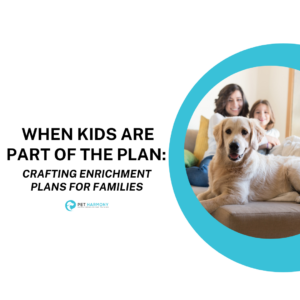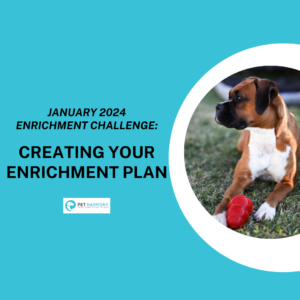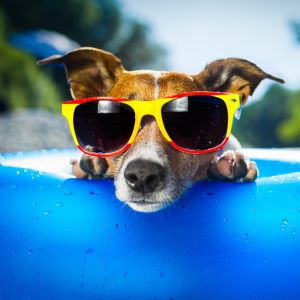
When Kids Are Part of the Plan: Crafting Enrichment Plans for Families
By this point in time, I imagine that many pet parents have heard the term “enrichment” being bandied about, especially if you are one of

By this point in time, I imagine that many pet parents have heard the term “enrichment” being bandied about, especially if you are one of

I know that the new year is often a time that people take a beat to focus on what matters to them, and for many

A question that we get frequently asked is: My dog doesn’t have any behavior issues! How can I implement your enrichment framework? That’s a great
If you’ve been following us for a while, you probably know that we think enrichment is a must. We still get a lot of questions,
If you’ve been following us for a while, then you know that we put a hefty emphasis on sustainability for pet parents. When you have
If you prefer to listen to this blog post, click here. This month’s training challenge is about our favorite topic: enrichment. More specifically, evaluate
Last week we started in our our first training challenge of 2020: Draft an enrichment plan for your pet. We had just finished filling out
Happy New Year everyone! I can’t believe we’re already into our 2nd year of training challenges. Thank you to everyone who has participated thus far

Happy August, y’all! With summer in full swing, many places are seeing record-breaking heat waves, and that means we probably need to adjust our plans
We work with families that are experiencing issues ranging from mild annoyances to struggles that are greatly impacting the quality of life for everyone in

$35 off a
4-session bundle
$65 off an
8-session bundle
Use code DOGDAYS2025 at checkout
